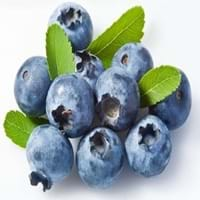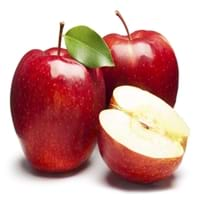Health Benefits
Cancer prevention, Cures gastro-intestinal troubles, Improves night vision, Improves stomach health, Prevents diabetes, Prevents high blood pressure, Reduces blood circulation problems
Cancer prevention, Supports healthy Liver function, Diarrhea treatment, Heart care, Increases metabolic rate, Neutralizes irritable bowel syndrome, Helps Prevent cataract, Prevents constipation, Prevents gall stones, Prevents high blood pressure, Helps prevent Parkinson's disease, Reduces risk of asthma, Treatment of alzheimer's disease
General Benefits
Fights against infections, Helps in weight loss, Prevents blood clotting in vessels, Treatment of urinary tract infections
Boosts immune system, Helps in weight loss, Maintains healthy cholesterol level, Whitens teeth
Skin Benefits
Anti-aging benefits, Nourishes skin, Protects against skin damage
Anti-aging benefits, Brightens and lightens complexion, Hydrates skin, Treatment of acne, Treatment of dark spots, Treatment of puffy eyes
Hair Benefits
Prevents hair loss
Prevents hair loss, Promotes longer and healthier hair, Regulates hair growth, Treatment of dandruff
Allergy Symptoms
Not Available
Abdominal pains, Itching, Swelling of mouth, tongue or lips, Vomiting
Side Effects
Decrease in blood sugar levels, Diarrhoea, Dizziness, Headache, Internal bleeding, Stomach pain
Allergic reaction, May consist of poisonous seeds
Best Time to Eat
As a snack in the late afternoon, Don't consume at night and before bed, Eat the fresh ones, avoid mixing with any other foods, don't eat after meal., Morning time (before lunch)
Any time except an hour after meal, Best if taken as a breakfast (or empty stomach), Don't consume at night and before bed
Vitamin B5 (Pantothenic Acid)
Vitamin C (Ascorbic Acid)
Vitamin K (Phyllochinone)
Phytosterol
Not Available
Calories in Fresh Fruit with Peel
Calories in Fresh Fruit without Peel
Not Available
Calories in Frozen Form
Not Available
Calories in Dried Form
Not Available
Calories in Canned Form
Not Available
Season
Summer
All seasons
Varieties
Dwarf bilberry, Piper, bog blueberry, Northern bilberry, Mountain bilberry and Oval-leaved bilberry
Red Delicious, Golden Delicious, Gala, Fuji, Granny Smith, Arkansas Black, Sampion, Pink Lady, Cameo, Jonagold, Mc Intosh, Ananasrenette, Lobo, Pacific Rose, Yellow transparent and Bramley
Color
Dark purple
Green, Red, Yellow
Inside Color
Light Green
White
Taste
Sweet
Sweet, Sweet-Sour
Origin
Unknown
Central Asia, Middle East Asia
Soil Type
Moist, Well-aerated
Loam
Climatic Conditions
Cold
Cold
Facts about
- Bilberries are used in manufacturing of alcoholic drinks.
- They are used to improve aromas of sorbets.
- The green extract of it's leaves is used in textile industry as natural dye.
- Apples can be as small as a pea and as big as a pumpkin.
- There are more than 8000 varieties of apples.
- Life of an Apple tree can be more than 100 years.
- Apples contain 25% air, therefore they float in water.
Other Countries
Denmark, Finland, Iceland, Sweden
Chile, France, India, Iran, Italy, Poland, Russia, Turkey, United States of America
Top Importer
United States of America
Russia
Botanical Name
Vaccinium myrtillus
Malus Domestica
Synonym
blaeberry, whinberry, European blueberry, whortleberry
Malus Communis or Malus Pumila or Pyrus Malus
Subkingdom
Tracheobionta
Tracheobionta
Division
Magnoliophyta
Magnoliophyta
Class
Magnoliopsida
Magnoliopsida
Subclass
Dillenhidae
Rosidae
Family
Ericaceae
Rosaceae
Species
Vaccinium myrtillus
M. domestica
Difference Between Bilberry and Apple
We might think that Bilberry and Apple are similar with respect to nutritional value and health benefits. But the nutrient content of both fruits is different. Bilberry and Apple Facts such as their taste, shape, color, and size are also distinct. The difference between Bilberry and Apple is explained here.
The amount of calories in 100 gm of fresh Bilberry and Apple with peel is 44.00 kcal and 52.00 kcal and the amount of calories without peel is Not Available and 48.00 kcal respectively. Thus, Bilberry and Apple belong to Low Calorie Fruits and Low Calorie Fruits category.These fruits might or might not differ with respect to their scientific classification. The order of Bilberry and Apple is Ericales and Rosales respectively. Bilberry belongs to Ericaceae family and Apple belongs to Rosaceae family. Bilberry belongs to Vaccinium genus of Vaccinium myrtillus species and Apple belongs to Malus genus of M. domestica species. Beings plants, both fruits belong to Plantae Kingdom.









